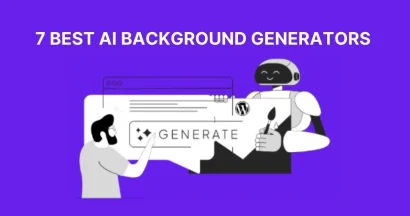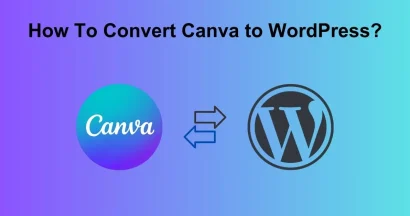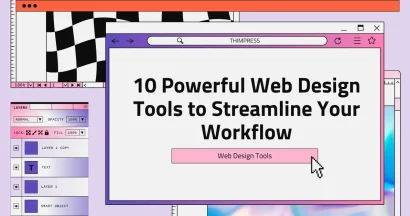When you Start a Website, it í one of the best ways to either get a passive income or showcase what your business has to offer. Unfortunately, most beginners assume that the journey to getting an online presence is a demanding and intimidating one.
However, that is not the case. To make a site today, you don’t even need to have any technical skills. This is thanks to automated website creation tools such as website builders and content management systems (CMS). If you’d like to Start a Website such as a blog, portfolio, e-commerce store, or business website, this guide will walk you through the whole process step by step.
Ways to Start A Website for Newcomers
1. Choose a suitable web-building platform to Start a Website
Since there are two ways to build your website, you need to decide your best fit. A website builder provides an easy and faster way. Because it offers pre-built templates and components. Then, we can integrate and customize it to create a complete website.
CMSs, on the other hand, are open-source platforms that allow users to create their own websites or use pre-built themes and integrate them with third-party plugins to offer advanced functionalities.
The former are online web-building services and can also be used to create simple business websites and e-commerce stores. The latter is more suitable for users who do not want to be limited in terms of customization, flexibility, hosting options, and plugin integrations. You can use most part of the best personal website builders to create any type of website.
2. Start a Website: Buy a domain name and web hosting
Website builders allow users to use it for free with a subdomain. However, free plans are usually very limited, and they don’t give your site a professional look. You will therefore need to upgrade and get a hosting plan that suits your business. You don’t have to start high as you can always scale up as your traffic grows.
For CMSs, you can choose between the various web hosting service providers available out there and then install the software. When choosing your hosting plan, you can start with shared hosting, which will allow you to figure out the direction you want to take with your site without costing you a lot of money. You can then upgrade as your traffic grows.
For both options, you will need a domain, which is basically the bit of the URL that identifies your website. Some website builders and web hosts let you register for free if you sign up with them. You can also integrate an existing domain without having to transfer it.
3. Start a Website: Pick/design a suitable template
After choosing your website creation tool, signing up for hosting, and registering a domain, you can now start creating your website. Website builders allow you to do this quite easily using a drag and drop option. Firstly, you will need to choose a template that will provide the framework for your site. And, Wix has the most number of templates with 500+, while most of its competitors have less than 100.
If you chose to go with a CMS, your template design options are unlimited. WordPress, the most popular CMS, provides thousands of templates, both free and paid, and there are many third-parties that design and sell CMS templates. Apart from that, you can always create a custom template or have one designed for you by a freelancer or a design agency.
4. Start a Website: Customize your template design
A template simply provides a framework for your site. And if it’s not custom, then chances are there are several other websites using the same template. To make your site appear unique, you need to customize it. You can add or remove elements, edit images, add/ remove pages, change sizes, colors, fonts, etc.
If you decided to go with a website builder, this process will be quite easy as the editor is usually drag and drop. You will however be limited in terms of how much you can customize it. As for CMS themes, you can completely change up the design if you are conversant with HTML and CSS. If not, you can choose to have a developer do that for you.
5. Start a Website: Upload and format your own content
After setting everything, it’s now time to populate your website with content, and that means text, images, and videos where applicable. However, while doing so, there’s something that you need to be keen on – SEO.
Search engine optimization is what will build your site rank higher on search engine results pages (SERPs), and so you need to have a strategy on how to optimize your site during content creation. SEO can be optimized through high-quality writing and the use of keywords, among other means.
If you have a blogging site, you can learn tips for writing great content for your site. The aim should always be to make readers stick around/ come back as well as rank higher on Google. You can install an SEO plugin to help you optimize your content for SEO. You can also install other useful plugins such as Google Analytics, which is a free tool for tracking traffic to your website.
6. Start a Website: Test & Publish your website
Once everything is set, it’s now time to make sure that it all looks and works as it should. Check the buttons, speed, links, etc. Once you are convinced everything is great, you can then publish it for the world to see.
Note that in the case of website builders, you most likely won’t be able to change your template once you go online. This means you need to make sure you are confident before you publish the site.
Start a Website: Wrap up
You can easily start a website using a website builder or a content management system. The guide above should help you get a picture of the entire process as well as insights into what you need to do. However, once your website is up, the work is not finished. You need to keep on improving your website to make it better and more effective as well as boost business success.
Read more: Best WooCommerce Themes for an Unstable 2021 with Covid-19


